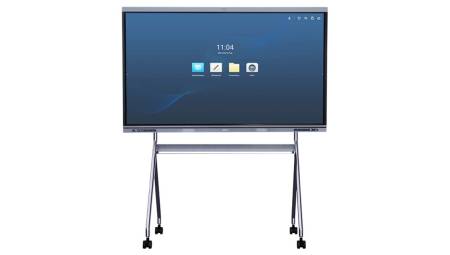 Colombia. Teleworking was already a common practice in many Colombian companies. Now the time has come to make it even more relevant. According to Asomóvil, it is estimated that in the situation generated by Covid19 there will be an increase in fixed Internet consumption of 40%, while the use of mobile voice will grow by about 50%. Data usage will also increase by 25%, and current WhatsApp traffic could be multiplied by five.
Colombia. Teleworking was already a common practice in many Colombian companies. Now the time has come to make it even more relevant. According to Asomóvil, it is estimated that in the situation generated by Covid19 there will be an increase in fixed Internet consumption of 40%, while the use of mobile voice will grow by about 50%. Data usage will also increase by 25%, and current WhatsApp traffic could be multiplied by five.
When mentioning teleworking and technology, we are talking about a combination of infrastructure, devices, content and applications. From Furukawa Electric, we present some recommendations so that connectivity and bandwidth are the best allies during teleworking.
How to prevent the Internet connection from collapsing?
1. Prioritize the Internet: To avoid cuts during work videoconferences or Internet calls, it is recommended to prioritize the use of the network. This action can be done through some connectivity solutions such as the router, which will provide higher Internet speed to the computer that the user chooses (laptop, PC or other device).
2. Know the contracted bandwidth: Keep in mind that the bandwidth you hire has a limit, and when it is used in its entirety is when more problems arise. Now, this does not mean that all the people in the house cannot be connected at the same time or that they must connect "in turns". What should really be done is to properly use the services according to the schedule and the needs of each one.
3. Control the upload of information: If the upload of information (videos, high-resolution photos, various documents, databases, etc.) is frequently carried out in large volumes, it is recommended to do it at night, since people will be in their rest time and the network will be less saturated, which will allow the upload of files with more speed.
4. Avoid connecting many devices at once: If there are many people connected to the network, the capacity of the plan or data will be divided by the number of devices. For example, if the plan is 20 Megabytes, it is divided by the total number of connected devices. This causes the capacity and speed per device to decrease. To avoid this, it is best to disconnect unnecessary devices and prioritize only those that are needed. So it is advisable not to connect more than 4 devices in parallel.
5. Use the mobile version of platforms when possible: When a website or platform has a mobile version, it is recommended to use this option, since they are usually lighter applications, this allows to significantly reduce data usage and helps the connection to be better.
6. Compress files: It is advisable to compress documents before sending them, as compressed files usually weigh much less than the original files.
7. Decrease automatic downloads: Check the settings of social networks and messaging platforms so that the videos that appear on the platform only play if they are clicked.
Fiber optics, the solution for telecommunications service operators
Telecommunications service operators see the need for networks to support the growth of broadband usage right now, where thousands of devices are connected to different networks, whether wireless or wired. And this is where these companies must take advantage to be aligned with the needs of the market, the current and future demand of customers, making investments in converged optical access networks, ready for high speeds, low latency, quality of service and high number of connected devices.
In the short term, operators that provide a service with the minimum quality (speed) expected by customers and at a reasonable price, will have strong advantages over the competition and will guarantee the loyalty of their customers.
Text written by: Hernani Szymanski - Head Product and Application Engineering de Furukawa.















